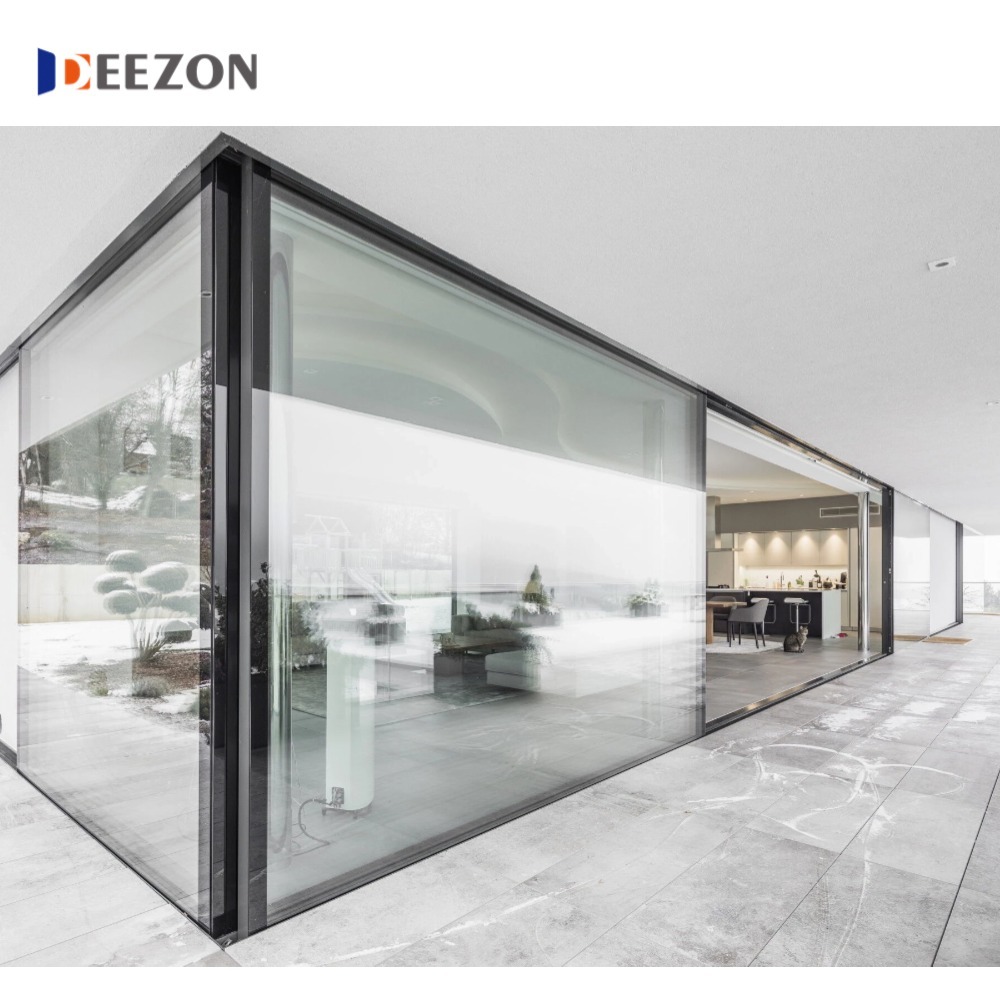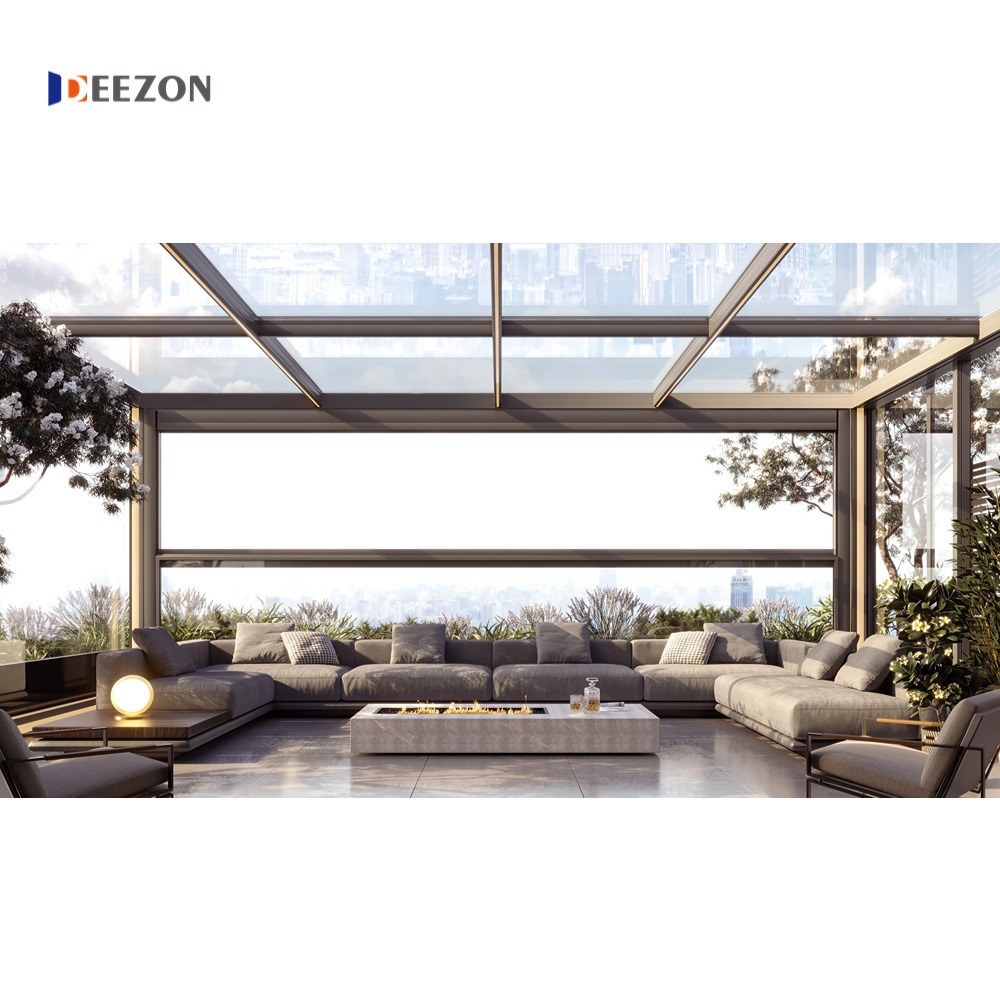Foshan Deezon Windows and Doors Co.,Ltd.
The Versatility of Glasshouse Aluminum in Architectural Design: A Comprehensive Exploration
Aug 02,2025

The Versatility of Glasshouse Aluminum in Architectural Design
Table of Contents
- Introduction to Glasshouse Aluminum in Architecture
- Key Benefits of Using Glasshouse Aluminum
- Aesthetic Appeal of Glasshouse Aluminum
- Sustainability in Architectural Design with Glasshouse Aluminum
- Innovative Design Applications of Glasshouse Aluminum
- Maintenance and Durability of Glasshouse Aluminum
- Notable Case Studies Featuring Glasshouse Aluminum
- Future Trends in Glasshouse Aluminum Usage
- Conclusion
- Frequently Asked Questions
Introduction to Glasshouse Aluminum in Architecture
In the constantly evolving field of architecture, materials play a pivotal role in defining the aesthetics, functionality, and sustainability of structures. **Glasshouse aluminum**, a remarkable combination of glass and aluminum, has emerged as a quintessential element in modern architectural design. Its versatility allows for a fusion of **style and substance**, making it a popular choice among architects and builders worldwide. This article explores the various dimensions of glasshouse aluminum, including its benefits, aesthetic contributions, and practical applications in contemporary architecture.
Key Benefits of Using Glasshouse Aluminum
Durability and Strength
One of the most compelling advantages of glasshouse aluminum is its **durability**. Unlike traditional materials, aluminum does not rust or corrode, which ensures a longer lifespan for architectural projects. Coupled with the strength of glass, this material can withstand various environmental conditions, making it suitable for both residential and commercial buildings.
Lightweight Nature
Aluminum is significantly lighter than steel and other materials, which simplifies the construction process and reduces structural load. This lightweight feature is especially beneficial in large-scale designs where **weight management** is crucial. It allows for the creation of expansive glass facades and intricate designs without compromising safety or structural integrity.
Energy Efficiency
Incorporating glasshouse aluminum into architectural designs facilitates improved **energy efficiency**. The combination of insulated glass and aluminum frames enables buildings to maintain consistent internal temperatures, reducing the need for excessive heating or cooling. This not only leads to lower utility bills but also supports sustainable building practices by minimizing energy consumption.
Aesthetic Appeal of Glasshouse Aluminum
Modern Design Trends
Architectural trends increasingly favor minimalist and sleek designs that emphasize natural light and open spaces. Glasshouse aluminum fits seamlessly into these modern themes, offering **clean lines** and an unobstructed view of the surroundings. Its reflective quality enhances the visual appeal of buildings, allowing them to blend harmoniously with their environment.
Customization Options
Another attractive aspect of glasshouse aluminum is its high level of **customization**. Architects can manipulate its form, color, and finish to match the unique vision for each project. Whether opting for a matte finish for a subdued look or a polished finish for a contemporary vibe, the possibilities are virtually endless. This versatility enables tailored solutions that can meet any design requirement.
Sustainability in Architectural Design with Glasshouse Aluminum
Recyclability
Sustainability is a core consideration in modern architecture, and glasshouse aluminum shines in this area. Aluminum is one of the most **recyclable** materials available, with the potential to be recycled infinitely without losing quality. This contributes to a circular economy, reducing waste and preserving natural resources, an essential aspect of eco-friendly building practices.
Passive Solar Design
Utilizing glasshouse aluminum also supports **passive solar design** principles. Buildings can be oriented to maximize sunlight exposure, with strategically placed aluminum-framed glass that captures natural light while minimizing heat gain. This design approach not only enhances occupant comfort but significantly reduces reliance on artificial lighting.
Innovative Design Applications of Glasshouse Aluminum
Residential Projects
In residential architecture, glasshouse aluminum is increasingly being used to create stunning **sunrooms**, **patios**, and **open-concept living spaces**. These structures not only provide a seamless transition between indoor and outdoor environments but also invite an abundance of natural light into the home. Homeowners appreciate the connection to nature without sacrificing comfort.
Commercial Spaces
Commercial buildings benefit immensely from the application of glasshouse aluminum. **Retail stores**, **office buildings**, and **museums** utilize large glass facades to create inviting atmospheres. The transparency provided by glasshouse aluminum not only enhances visibility and foot traffic but also reinforces brand identity through captivating architectural statements.
Public Infrastructure
Glasshouse aluminum finds its place in public infrastructure as well, with applications in **airports**, **train stations**, and **community centers**. These large-scale projects leverage the material's structural properties and design flexibility to create functional, aesthetically pleasing spaces that serve the needs of the public while standing out as architectural landmarks.
Maintenance and Durability of Glasshouse Aluminum
Low Maintenance Requirements
One of the standout features of glasshouse aluminum is its low maintenance requirement. Unlike wood, which may require staining and sealing, or steel, which demands regular treatments to prevent corrosion, aluminum only needs periodic cleaning to maintain its appearance. This makes it an appealing option for busy homeowners and property managers alike.
Longevity
With proper installation and care, glasshouse aluminum structures can last for decades. The inherent properties of aluminum ensure that it remains resistant to the elements, preserving the integrity of the design and minimizing the need for costly repairs or replacements in the future.
Notable Case Studies Featuring Glasshouse Aluminum
Case Study 1: The Glasshouse at Chelsea
One of the most renowned examples of glasshouse aluminum can be found in the **Glasshouse at Chelsea**, a stunning botanical garden that utilizes aluminum frames throughout its construction. This project highlights how glasshouse aluminum can create airy, light-filled spaces that enhance the growth of plants while also attracting visitors with its striking design.
Case Study 2: The Crystal Pavilion
The **Crystal Pavilion**, located in a bustling urban environment, showcases the transformative potential of glasshouse aluminum. Its extensive use of glass allows for panoramic views of the city, while the aluminum structure provides the necessary stability. This project exemplifies how modern architectural techniques can create functional yet visually stunning spaces.
Future Trends in Glasshouse Aluminum Usage
Smart Technology Integration
As technology advances, the integration of **smart technologies** into glasshouse aluminum structures is expected to rise. From automated window systems that optimize natural light to energy-efficient climate control mechanisms, the future of architectural design will likely embrace technology to enhance the benefits of glasshouse aluminum further.
Increased Focus on Biophilic Design
With a growing emphasis on **biophilic design**, which aims to connect occupants with nature, glasshouse aluminum will play a pivotal role in creating spaces that incorporate natural elements. Expect to see more buildings that blend indoor environments with natural landscapes, promoting well-being and productivity.
Conclusion
Glasshouse aluminum stands out as a versatile and innovative material in contemporary architectural design. Its unique combination of durability, aesthetic appeal, and sustainability makes it an ideal choice for various applications, from residential homes to large commercial spaces. As architectural trends continue to evolve, glasshouse aluminum will undoubtedly play a crucial role in shaping the future of building design, offering solutions that are not only functional but also enriching to the human experience.
Frequently Asked Questions
What is glasshouse aluminum?
Glasshouse aluminum is a construction material that combines aluminum framing with large glass panels, providing both structural support and aesthetic appeal in architectural designs.
Why is glasshouse aluminum considered sustainable?
Glasshouse aluminum is sustainable due to its recyclability, energy efficiency, and ability to support passive solar designs, reducing environmental impact.
How does glasshouse aluminum improve energy efficiency?
The combination of insulated glass and aluminum frames helps maintain stable internal temperatures, reducing the need for heating and cooling systems.
What types of projects benefit from glasshouse aluminum?
Residential projects like sunrooms, commercial spaces like retail stores, and public infrastructure such as airports and community centers all benefit from the use of glasshouse aluminum.
How do I maintain glasshouse aluminum structures?
Maintaining glasshouse aluminum requires minimal effort, primarily involving periodic cleaning to keep the surfaces clear and visually appealing.







